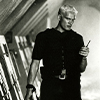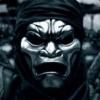| Welcome, Guest |
You have to register before you can post on our site.
|
| Latest Threads |
hello! I had no idea this...
Forum: Presentation
Last Post: CSchmidlapp
Yesterday, 09:39 PM
» Replies: 3
» Views: 192
|
The Bourne Identity - The...
Forum: Released
Last Post: HD335
Yesterday, 05:25 AM
» Replies: 38
» Views: 12,942
|
TROY (2004) - Replace Sco...
Forum: Requests, proposals, help
Last Post: five2one
2025-12-11, 11:37 AM
» Replies: 30
» Views: 15,260
|
Superman: The Movie 4K
Forum: Official and unofficial releases
Last Post: AdmiralNoodles
2025-12-11, 09:08 AM
» Replies: 69
» Views: 69,576
|
Peanuts DVD mono synched ...
Forum: Released
Last Post: uVSthem
2025-12-11, 04:45 AM
» Replies: 17
» Views: 10,902
|
Films that used silver re...
Forum: Official and unofficial releases
Last Post: Virtualcrane
2025-12-11, 01:19 AM
» Replies: 31
» Views: 41,105
|
Minority Report (2002) - ...
Forum: Released
Last Post: velocity
2025-12-10, 09:50 PM
» Replies: 2
» Views: 115
|
Total Recall 35mm Regrade
Forum: In progress
Last Post: Virtualcrane
2025-12-10, 09:19 PM
» Replies: 25
» Views: 10,622
|
Hello Everyone
Forum: Presentation
Last Post: don912
2025-12-10, 04:21 PM
» Replies: 0
» Views: 64
|
Hey
Forum: Presentation
Last Post: Jae55555
2025-12-10, 03:27 PM
» Replies: 1
» Views: 76
|
|
|
| Legend - Tangerine Dream Isolated Score |
|
Posted by: Croweyes1121 - 2019-07-08, 08:06 PM - Forum: Requests, proposals, help
- Replies (1)
|
 |
I have this Blu-ray, but my computer is currently on the fritz, so I have no means to rip the isolated score at the moment. Would anyone with the means be willing to get this up for me? Just a single file is fine - no need to split up anything. Thanks in advance. I can do this myself in a few weeks if need be.
|

|
|
| Taxi Driver - Final Shootout Regraded |
|
Posted by: Just Some Guy - 2019-07-08, 03:57 AM - Forum: Requests, proposals, help
- Replies (2)
|
 |
The final shootout scene had to be desaturated in order to lessen the red of the blood and make it suitable for the Ratings board in the 70s.
There are some production stills online that give an idea of the actual colors during that scene. Interestingly enough the color grading of the Criterion Laserdisc looks quite a bit better than the DVD and the reds in the final shootout actually look red.
I think it's a shame the scene had to be messed with and I think with creative talent and robust programs it may be possible to change that scene.
Anyone interested in attempting to color grade the final shootout scene to more closely match the laser disc (and perhaps the production stills)?
|

|
|
| overlay chroma + luma only in Resolve |
|
Posted by: Stamper - 2019-07-06, 09:36 AM - Forum: General technical discussions
- Replies (1)
|
 |
Hi guys,
For a project, I think I can fix blow out highlights in a particular master, by adding a second layer on top of the original, where I changed the contrast and luminosity so that highlights come back.
However this top image is of course very dark.
How can I in Resolve only use the luma and chroma portions on this overlay ie how can I remove the actual image only leaving out the color?
So that my layers goes: 1/ Master normaly color timed 2/ Overlay of the color only manipulated to fix the errors in 1.
Thanks if anyone can help. This is a resolve project.
|

|
|
| Mail problems & incoming hosting change |
|
Posted by: Feallan - 2019-07-04, 11:10 PM - Forum: Announcements
- Replies (6)
|
 |
Some of you may have noticed, but there have been problems with e-mail notifications (account activations, PM responses etc.) during the last week or so. This was the final nail in the coffin of the current hosting provider for me, so I'll be looking to change it as soon as possible.
It will most likely happen on this Saturday, or Sunday. During the process, some people will keep seeing old instance of the forum, since DNS changes can take 24 hours to propagate, sometimes even more. To avoid people posting to this old instance (and these posts not being moved to new instance), it will be completely locked with some kind of information message. Hopefully the new service will be better.
|

|
|
| New arrival |
|
Posted by: Chris Knight - 2019-06-29, 09:18 PM - Forum: Presentation
- Replies (6)
|
 |
Hello,
A few weeks ago, i found out, totally by accident the existence of the 35mm preservations...(fantastic thing by the way).
And then,by doing some research about it, i found out about all the amazing fan projects of all sorts, i had no idea existed. (i just knew about fanedits, but there is so much more.)
I spent quite some time the last few weeks between this board and ot.com, and i'am still amazed at the amount of quality work existing in this community.
I very much love movies in general, but i much prefer 80's and 90's movies...there were, in my opinion so much better than what we have these days...and that's the ones i grew up with so i think that count a lot in my appreciation...
For the moment,i don't have anything to contribute, as i don't have the skills or knowledge that some have around here, but i thought it would be nice to register and participate, and who knows one day contribute...
Thank you, and see you on the board!
|

|
|
| Suitable ‘all-in-one’ device |
|
Posted by: alexp2000 - 2019-06-16, 11:14 AM - Forum: Capture and rip
- Replies (3)
|
 |
Hi all,
Trying to find a capture device I can use for VHS as well as Sky TV programs and potentially Amazon/Netflix etc. Ideally something portable and not too expensive (within reason!)
Was looking at the Elgato HD S but wanted to see what everyone’s thoughts are?
Thanks
|

|
|
| A little Big Lebowski project |
|
Posted by: deleted user - 2019-06-14, 04:27 PM - Forum: In progress
- Replies (1)
|
 |
Goal is a little blanket 35mm regrade again, with Cinema DTS synced (the latter is already done). I started doing it with these pics I got off of ebay but half way through the process I got a little suspicious. The framing is remarkably similar to that of the Blu Ray and rather clean and also hard matted. So my question is, do these look like real 35mm pics to you guys or more like a scam? Because the guy selling those seems to be selling thousands of them constantly, of course saying they are real, but I'm wondering. The soundtrack is also rather bright. The colors also look kind of low-contrast, which could imply a Blu Ray source.
![[Image: 1-10.jpg]](https://i.postimg.cc/sB4YDbTt/1-10.jpg) ![[Image: 1-11.jpg]](https://i.postimg.cc/MMZyct4X/1-11.jpg) ![[Image: 1-12.jpg]](https://i.postimg.cc/6yFLHr71/1-12.jpg) ![[Image: 1-13.jpg]](https://i.postimg.cc/f3N7sMfc/1-13.jpg) ![[Image: 1-14.jpg]](https://i.postimg.cc/zyWw4yKD/1-14.jpg) ![[Image: 1-15.jpg]](https://i.postimg.cc/TpKJq7PD/1-15.jpg) ![[Image: 1-2.jpg]](https://i.postimg.cc/3kMmj36s/1-2.jpg) ![[Image: 1-4.jpg]](https://i.postimg.cc/bsS12Z60/1-4.jpg) ![[Image: 1-5.jpg]](https://i.postimg.cc/0rBpQYC2/1-5.jpg) ![[Image: 1-6.jpg]](https://i.postimg.cc/XXJf4Hdz/1-6.jpg) ![[Image: 1-7.jpg]](https://i.postimg.cc/kRBKsG7m/1-7.jpg) ![[Image: 1-9.jpg]](https://i.postimg.cc/bD611kcg/1-9.jpg)
For comparison, I found some other ones and at least some seem to have rounded edges and a little more believable colors, as far as that is recognizable in the bad pictures, and all of them seem to have a darker soundtrack and are a bit more contrasty, though that could admittedly just be the result of an inferior photographing technique.
![[Image: 1.jpg]](https://i.postimg.cc/mhFBK98F/1.jpg) ![[Image: 1-3.jpg]](https://i.postimg.cc/cv1q1tMh/1-3.jpg) ![[Image: 1-8.jpg]](https://i.postimg.cc/YLg7gchx/1-8.jpg) ![[Image: 2.jpg]](https://i.postimg.cc/WhwLPwrt/2.jpg) ![[Image: 2-2.jpg]](https://i.postimg.cc/svrd8NMt/2-2.jpg)
Thoughts? Just don't want to waste time doing a regrade to a Blu Ray, heh.
|

|
|
|